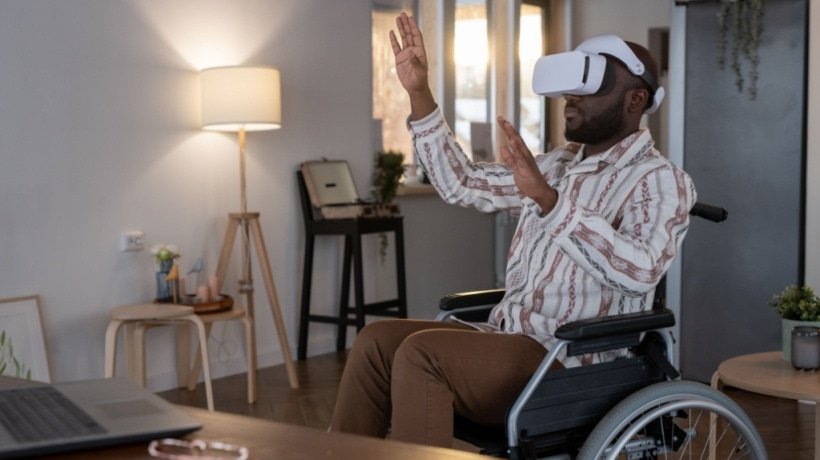Accessible Education And Inclusivity: Best Practices
Accessibility in education refers to providing a similar enrichment experience and options to exhibit knowledge among the students. Faculty and students around the globe have faced issues in adopting online learning during the pandemic. And yet it became more difficult for students with disabilities. The things they were looking for were not a common topic of discussion. This is where accessibility testing comes in and helps you in advancing your eLearning materials. As 26% of the world's population is born with disabilities, it is mandatory to make education accessible. Inclusivity is important to engage students with different abilities, cultures, and languages, and one of the easiest ways to make an impact with digital accessibility in education is to make it accessible. And, that is why universal accessibility guidelines were furnished as WCAG (Web Content Accessibility Guidelines).
Understanding Accessibility In Education
Accessible education is one that provides equal access and opportunities to learn and engage regardless of students' abilities. It doesn't have any partiality among students and ensures that every student can learn and understand the course material easily.
Key Elements Of Accessibility In Education
Several key elements are there to ensure education accessibility, some of which are:
- Accessible learning materials by offering them in multiple formats, including digital, audio, and braille, to cater to all types of learners, including the ones with disabilities. Learning material should also be easy to read and understand with clear instructions.
- Learning materials should be able to support assistive technology such as screen readers, speech recognition software, and text-to-speech software so that students with visual, hearing, or physical disabilities can access them easily.
- Educational institutes shall be designed to cater to the needs of each student, including the ones with mobility impairments. This can be achieved by including wheelchair ramps, accessible entrances and exits, and accessible restrooms.
- Educational institutions should also offer extended time for exams and note-taking so interpreters can help students fully participate in exams.
Legal Requirements And Guidelines Of Accessibility In Education
In many countries, including the United States, some legal requirements and guidelines are required to be followed by educational institutions to ensure accessibility for students with disabilities. These include:
- Americans with Disabilities Act (ADA)
This law prohibits discrimination against individuals with disabilities in all aspects of public life, including education. Therefore, educational institutions are required to provide reasonable accommodations to students with disabilities to ensure equal access to educational opportunities. - Section 504 of the Rehabilitation Act
This law also prohibits discrimination against individuals with disabilities in any program or activity that receives federal financial assistance, including education. - Web Content Accessibility Guidelines (WCAG 2.1)
These guidelines provide a set of instructions and recommendations to make web content accessible to people with disabilities. Educational institutions must ensure that their website and online resources meet these guidelines to provide equal access to all students, and this can be achieved through web accessibility testing as it provides you with the barriers and information basis on which resolutions can be made.
Best Practices For Accessible Education
Several practices are used to create accessible education; some of the best practices are:
1. Tips For Designing Accessible Learning Materials
Some of the tips to consider when designing accessible learning materials include the following:
- Use clear and concise language so that students can understand the concepts easily.
- Provide alternate formats to access the materials, like adding audio, captions, and braille so that students with vision or hearing impairment can easily access them.
- Ensure that your learning resources and materials are compatible with assistive technology such as screen readers.
2. Implementing Inclusive Teaching Strategies
Ensuring all students have access to quality education is crucial to creating a fair society. Therefore, it is important to implement inclusive teaching strategies as mentioned below:
- Make your educational materials, websites, and resources designed using Universal Design for Learning (UDL), as it provides multiple options for students to access and engage with learning material. The three principles on which UDL works include multiple means of representation, multiple means of action and expressions, and multiple means of engagement.
- Make sure to add differentiated instructions in order to meet diverse needs by tailoring teaching methods and materials. This approach helps students in getting varied levels of challenge and complexity, offers choices in activities or assignments, and provides additional support for students who need it.
- Make your education collaborative and inclusive with classroom activities by creating activities that require students to work together in pairs or small groups, encouraging students to share their experiences and perspectives, and offering them opportunities to learn from each other.
3. Technology And Accessibility
Some of the tips to make your educational material support technology and accessibility include:
- It is important to consider every student's needs; therefore, adding assistive technology while learning makes it easier for students with vision impairments.
- Make sure to make your educational platforms and the website accessible by getting web accessibility testing done to find the areas of improvement to make it accessible.
- Also, ensure that all of your digital content is accessible, including images, videos, and documents, so that students can easily access the resources.
Creating An Inclusive Environment
In order to create an inclusive educational environment, some of the things to consider are:
- Promote diversity and inclusion in the educational environment by celebrating different cultures and perspectives among students. Create and foster an environment where students feel welcomed and have a respectful atmosphere. Address every bias and stereotype with the proper knowledge to minimize its effect on students.
- To make students with disabilities comfortable, make sure to provide support and accommodations by identifying and addressing the needs of individual students, offering them reasonable accommodations and modifications, and collaborating with specialists and support staff to ensure every student's needs are well taken care of.
- Create an environment that offers collaboration and partnership between students, and you can also involve parents, caregivers, and the community to help students. You can encourage students to be open to communication and involvement, and not hesitate to seek feedback and suggestions for improvement. Help them take the initiative to complete projects while collaborating with their teammates.
- Also, create an environment of continuous evaluation and improvement by assessing the effectiveness of accessibility measures, gathering feedback from students, parents, and educators for improvements, and making adjustments and improvements based on the insights offered by students and parents.
And, suppose you are someone who is offering education materials online. In that case, you must implement web accessibility testing to identify the barriers to accessibility and then take appropriate steps to resolve them.
Conclusion
Making education accessible is important to offer students the same opportunities and learning experiences, regardless of their abilities. And in order to ensure the same, one has to focus on implementing key elements of accessibility in eLearning modules like K-12 and higher education. Therefore, using the best practices mentioned in the article will help you achieve accessible educational materials. Following these tips can create an inclusive environment for students with disabilities and allow them to feel comfortable.









